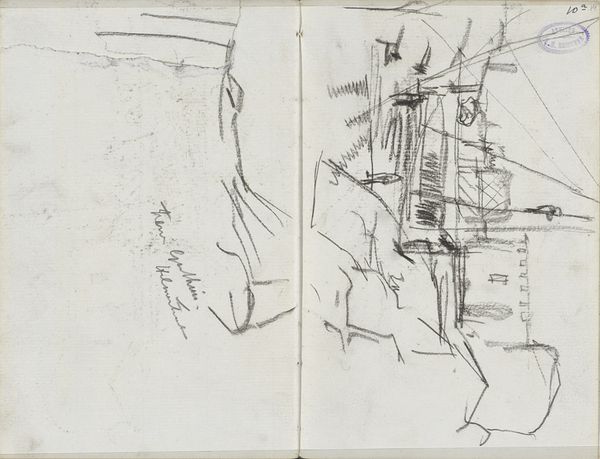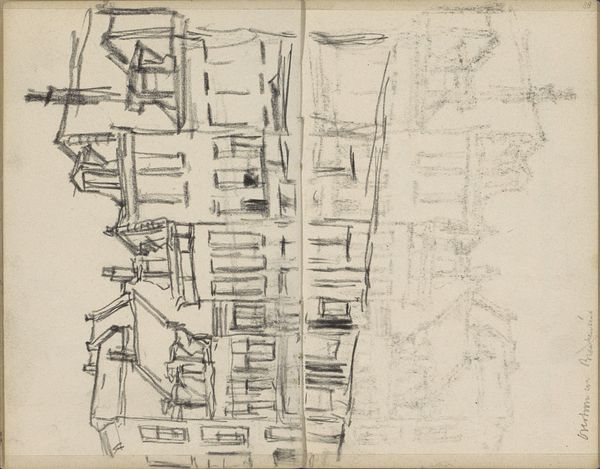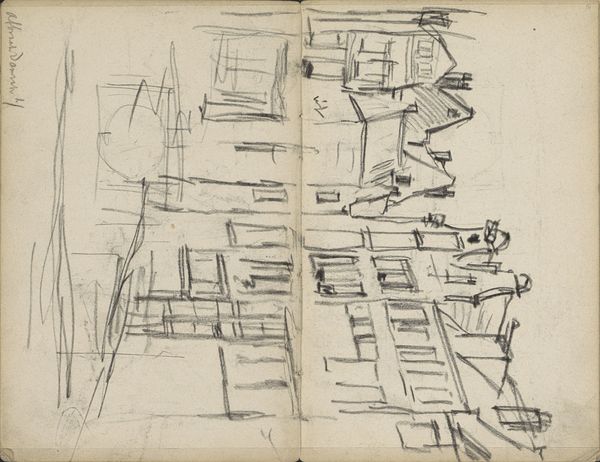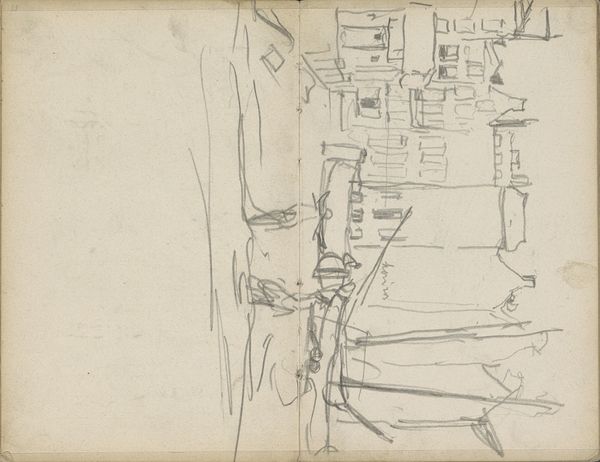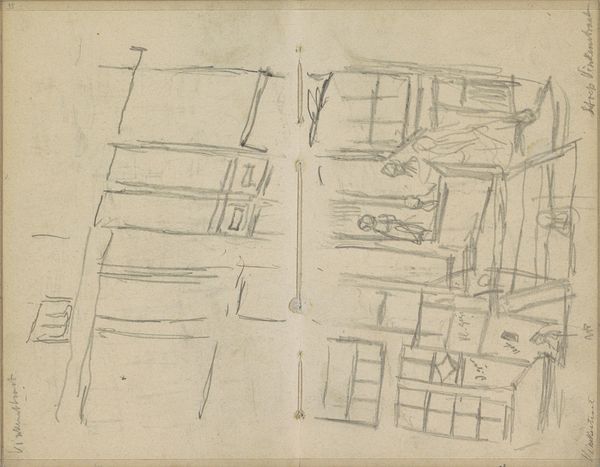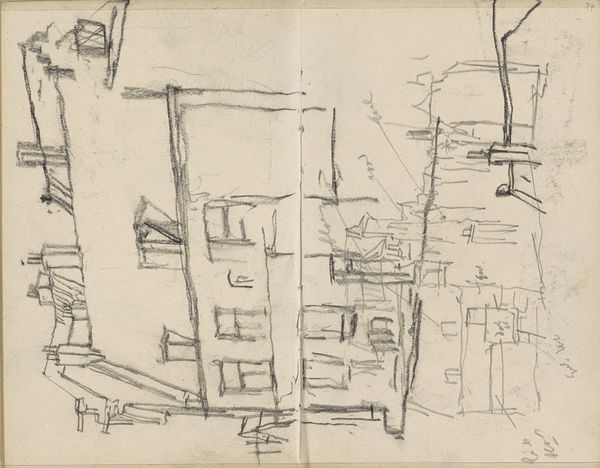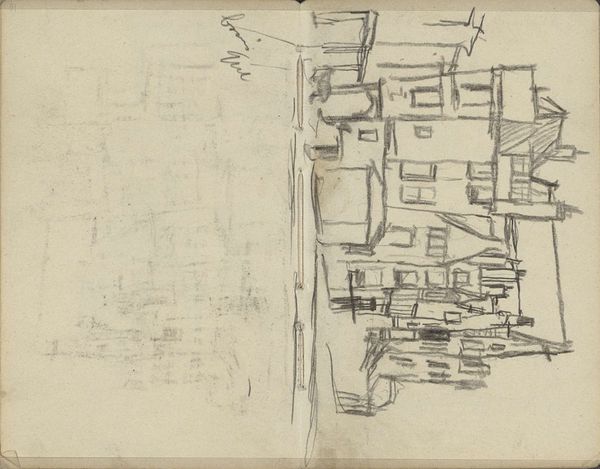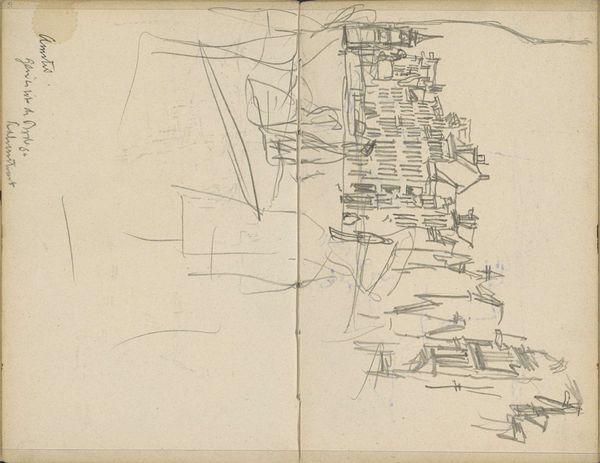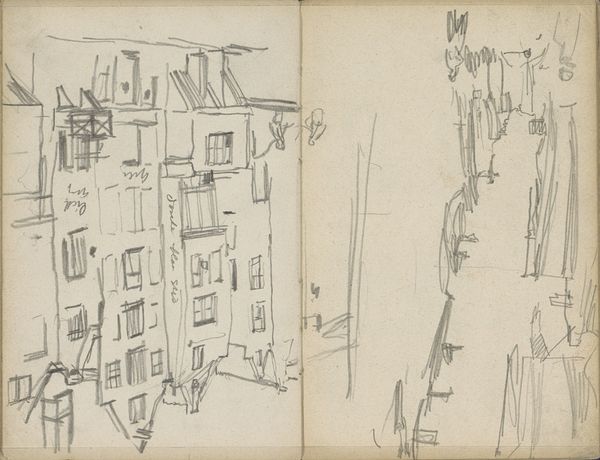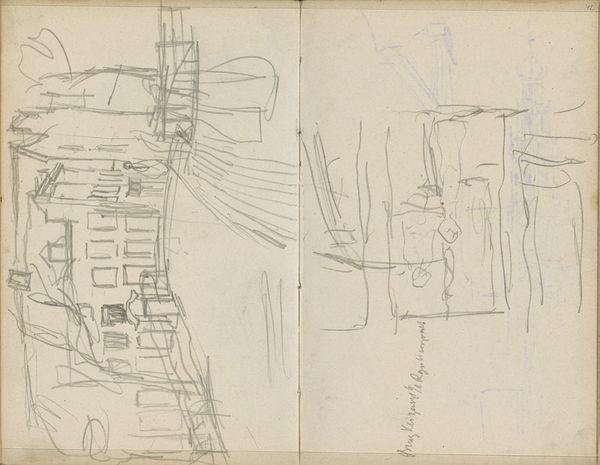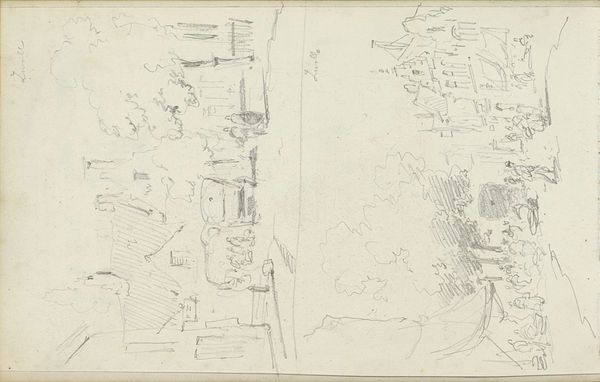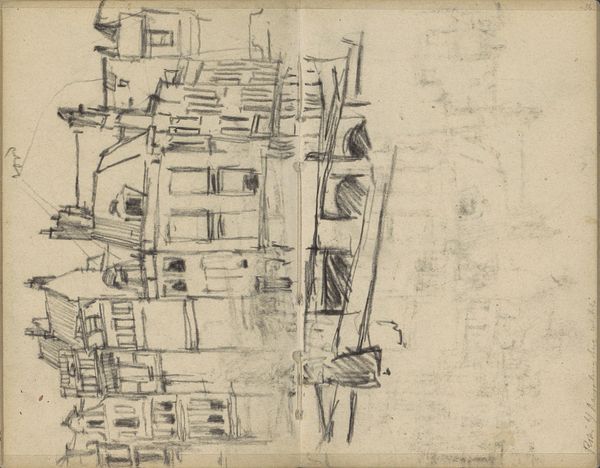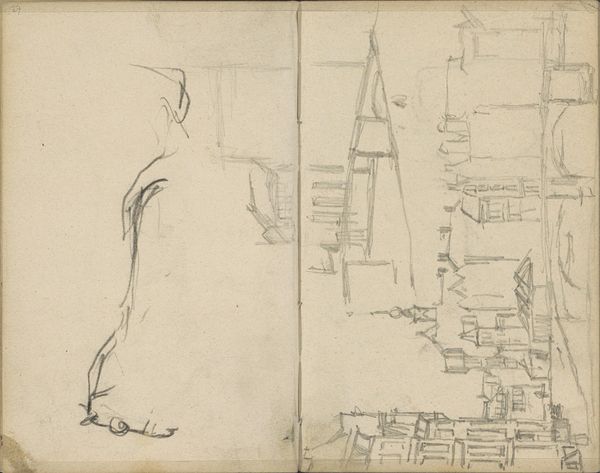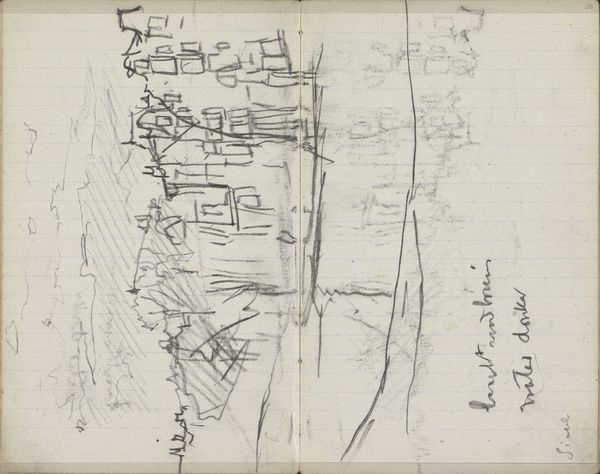
Gezicht op de Zieseniskade en een gezicht op de Prinsengracht te Amsterdam c. 1903
0:00
0:00
Copyright: Rijks Museum: Open Domain
Curator: Look at this, a pencil drawing titled "View of the Zieseniskade and a View of the Prinsengracht in Amsterdam" by George Hendrik Breitner, circa 1903. What's your first take? Editor: The hurried, fragmented lines capture a bustling city energy, like catching a fleeting glimpse rather than a studied portrayal. Curator: Absolutely. The visible structure—geometric shapes stacked—communicates so much about space, particularly its density and architectural vocabulary in a period emphasizing both industrial progress and intimate moments. Breitner utilizes linear perspective, drawing our eyes towards depth with rapid pencil strokes. Editor: True, yet there's also a kind of detached realism here. It documents the architecture of Amsterdam, but beyond this facade, one might find stories of a quickly modernizing culture, with increasing social inequalities in the city. It suggests an artistic attempt to reflect a gritty kind of urban reality in Dutch society. Curator: Precisely! He avoids idealization, capturing unvarnished daily life as if to elevate everyday scenes and subjects previously deemed unworthy by earlier artistic movements. His style is almost brutal; that hasty hand conveys a visceral understanding of space and place beyond mere replication. Editor: That brutal portrayal feels appropriate for this artist within the sociopolitical climate during that period. The development of urban space transformed existing neighborhoods while forcing laborers into crowded living conditions; maybe Breitner felt conflicted when reflecting on his environment. Curator: These fleeting moments offer more than mere observation; they capture the pulse and rhythm within geometric patterns and constructed form—the windows, lines, and stacked squares forming intricate relations that go beyond representation. It creates the idea of a structured city almost alive. Editor: Which is perhaps Breitner’s goal here – a sort of socio-historical rendering through an artistic process. I now observe that this artistic exercise has served as historical documentation for a changing world. Curator: Right, it reminds me to see formal elements beyond structures. This geometric space communicates something vital beyond architectural precision! Editor: Indeed. This artwork’s ability to evoke history by representing architecture illustrates what art can achieve in service of culture.
Comments
No comments
Be the first to comment and join the conversation on the ultimate creative platform.
